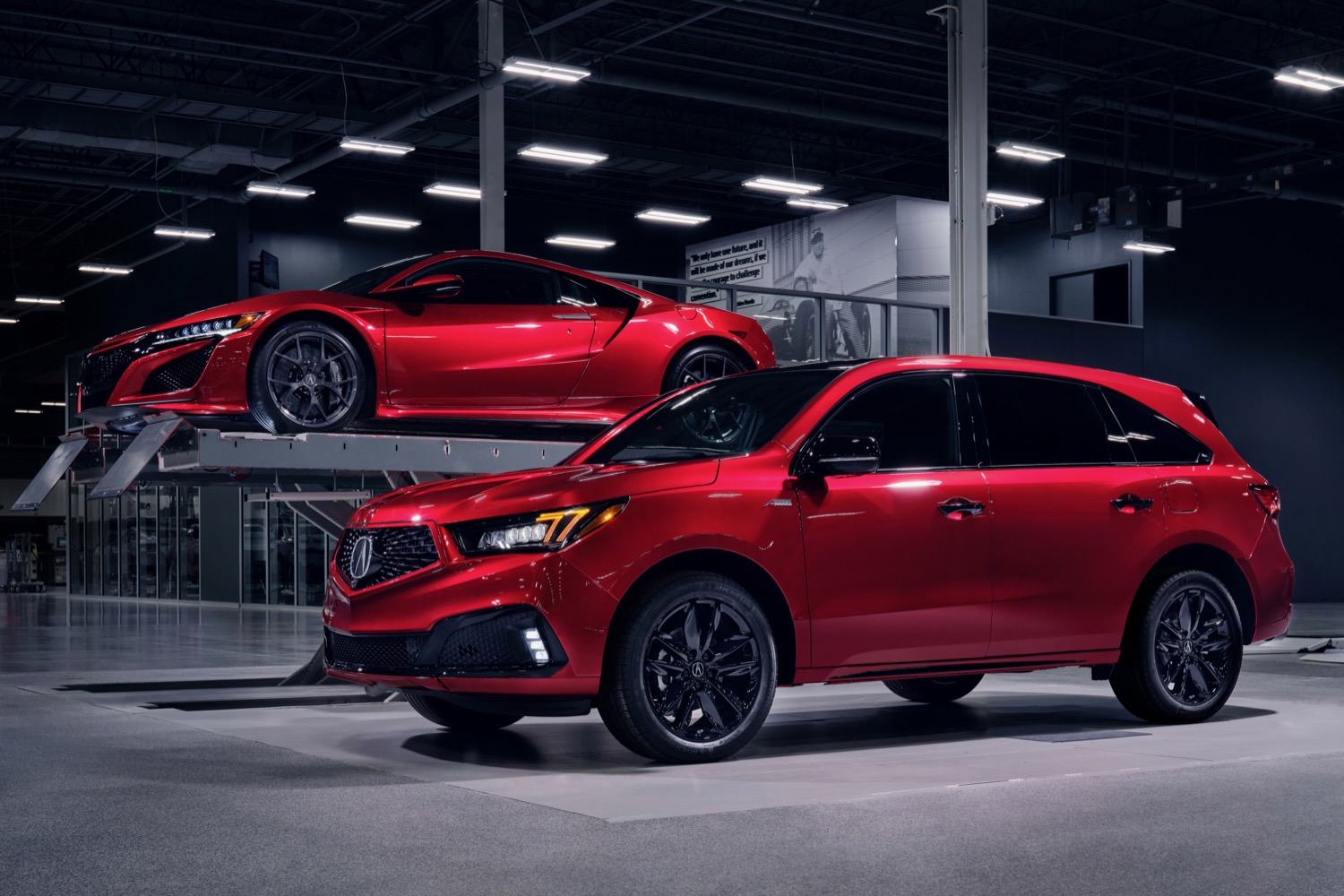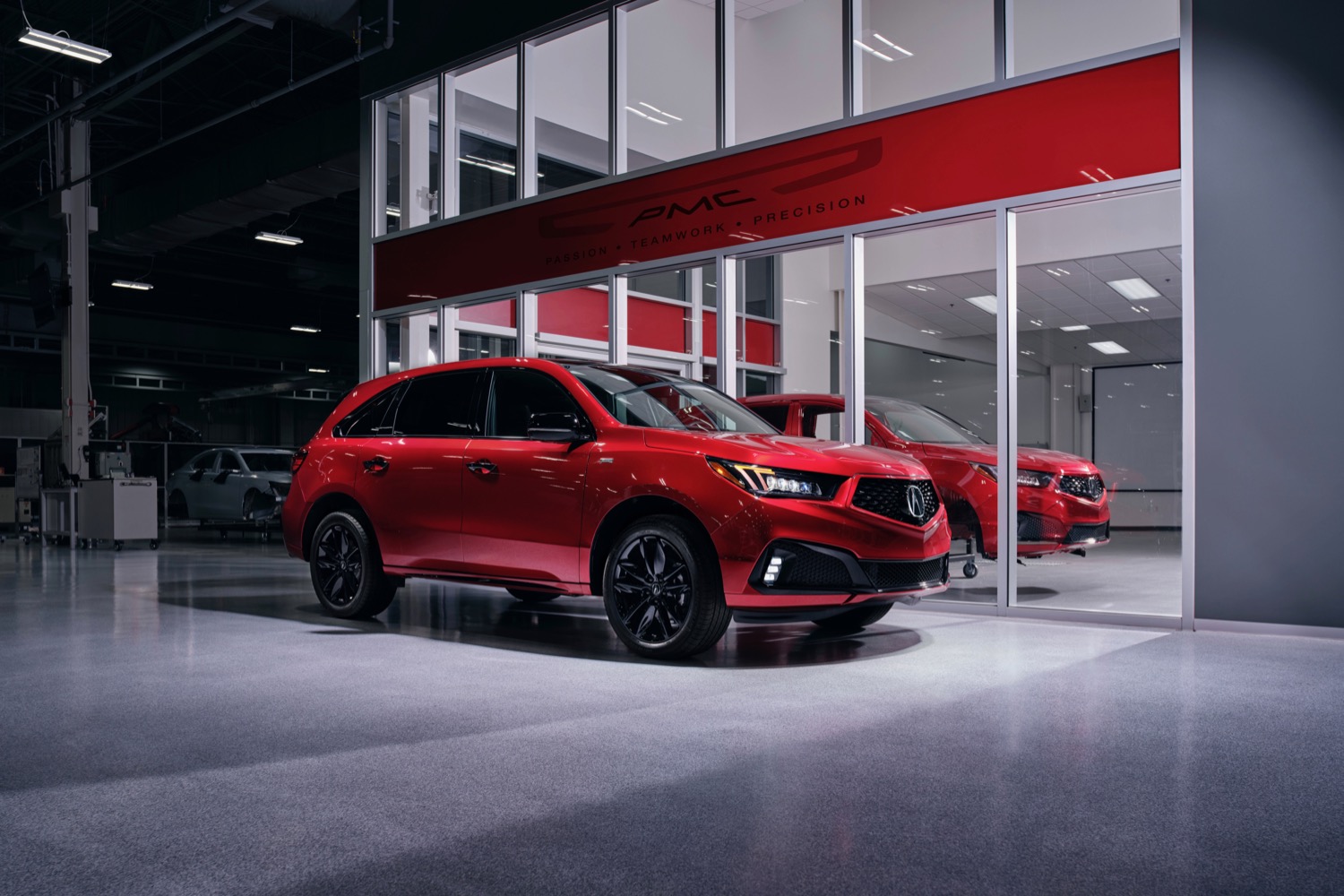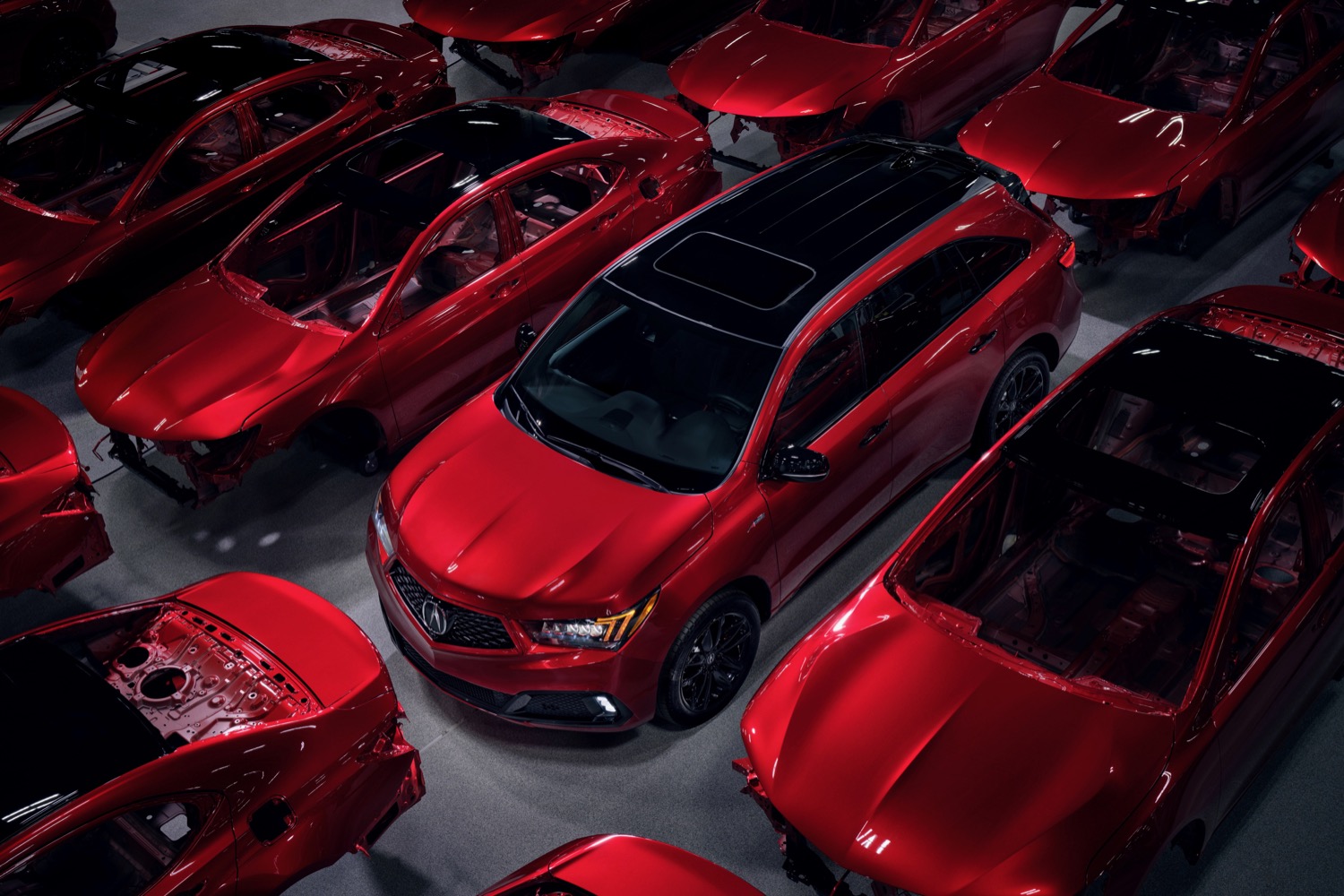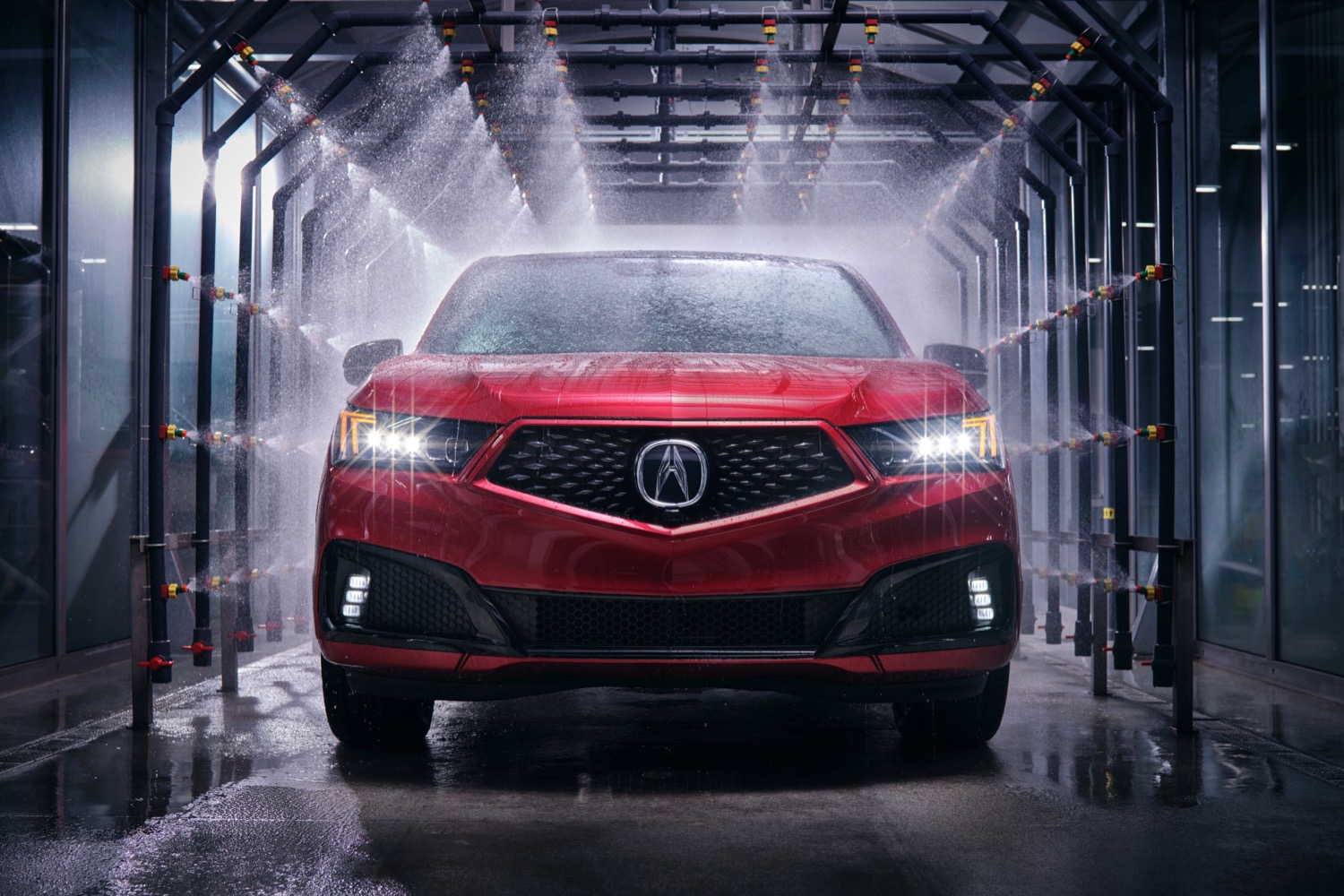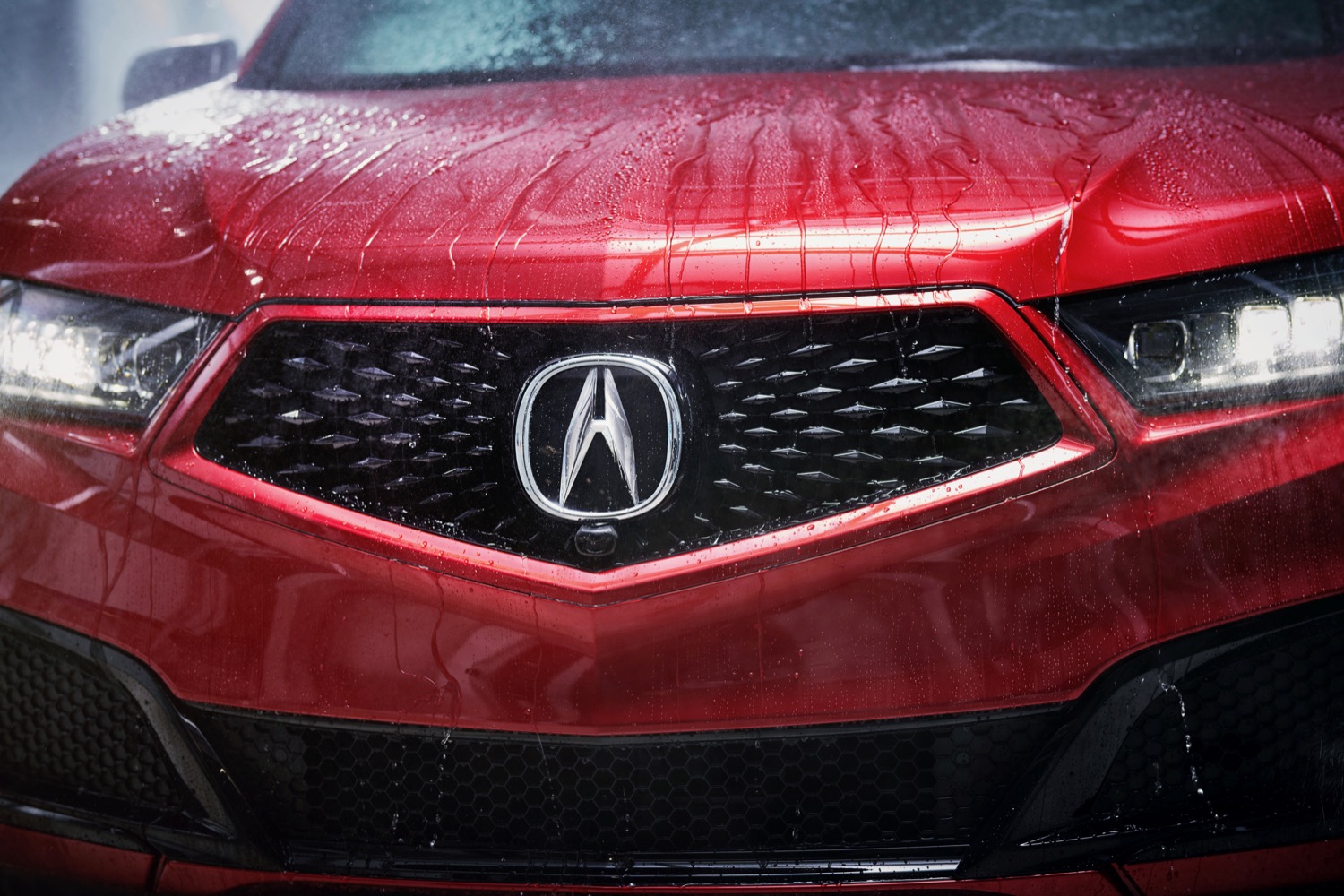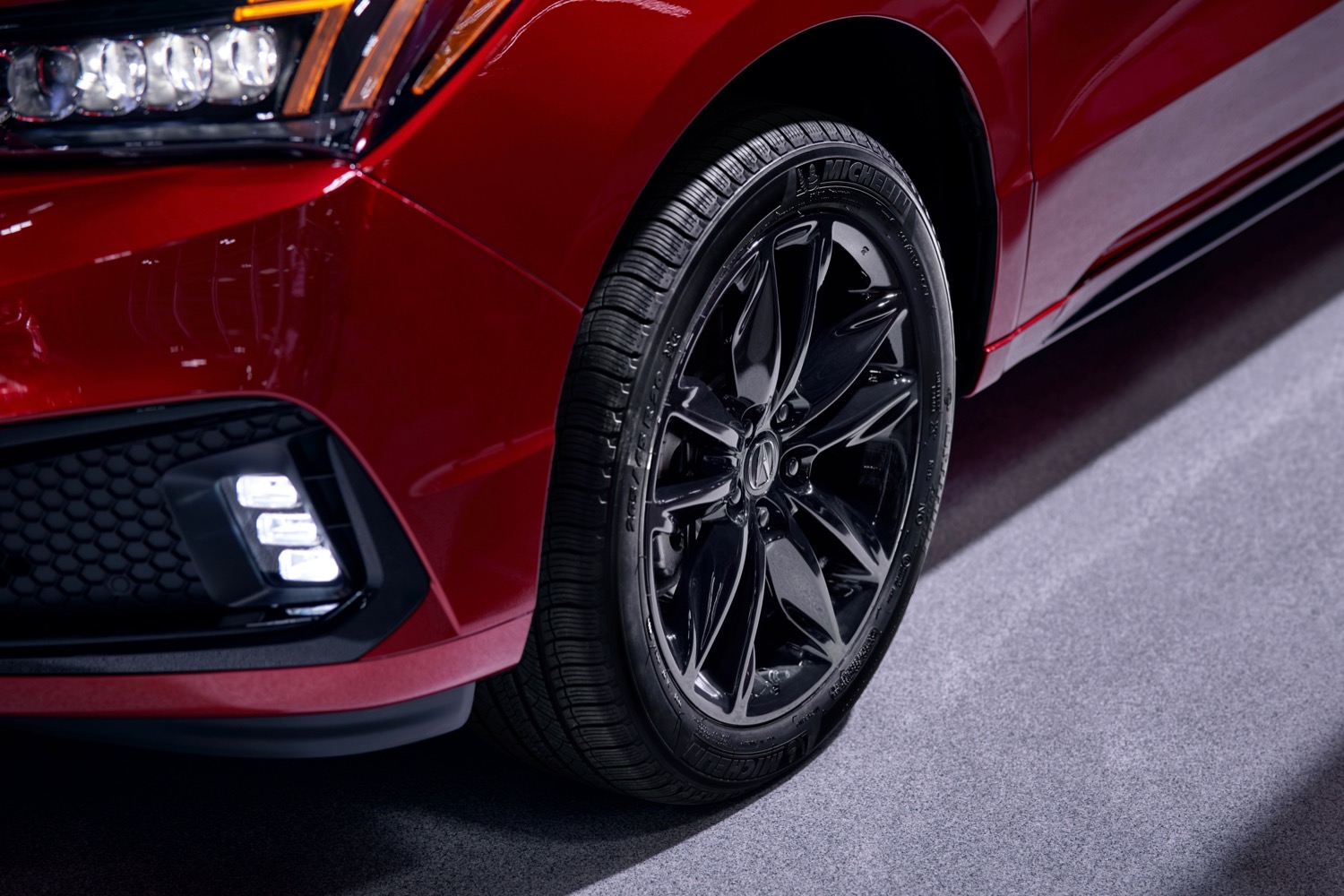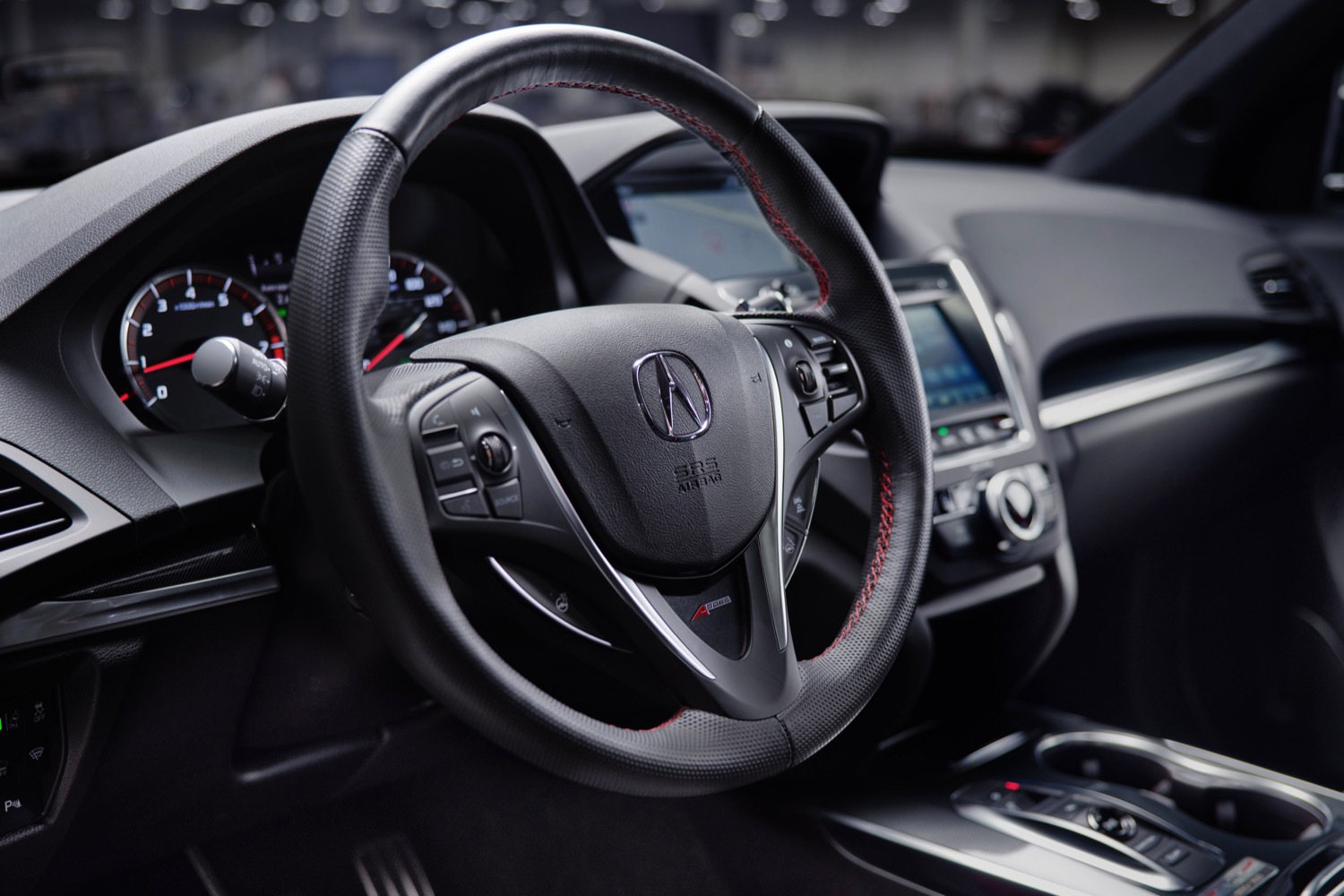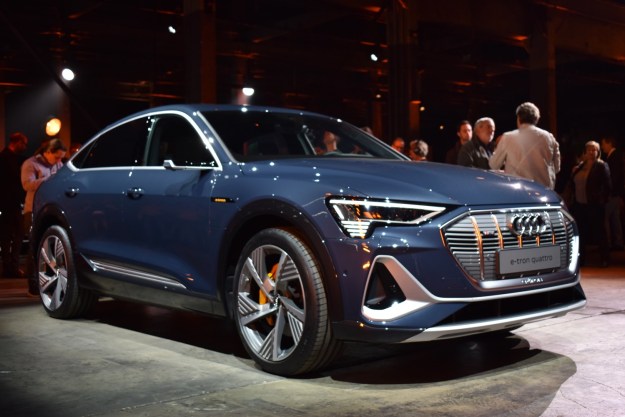The Acura MDX is a perfectly capable family hauler, but after a recent test drive, we felt the MDX needed something more to justify its high-end badge and price. That’s exactly what Acura is cooking up with the 2020 MDX PMC Edition, a limited edition that debuts at the 2019 Los Angeles Auto Show and goes on sale next year.
PMC stands for Performance Manufacturing Center, the Ohio factory that builds the Acura NSX supercar. Acura wants to make better use of that factory by building limited editions of its ordinary cars there as well. The Honda luxury brand previously launched a PMC Edition of its TLX sedan, and now the MDX is getting the same treatment.
As with the TLX PMC Edition, the MDX is available only in Valencia Red Pearl paint. The color originated with, you guessed it, the NSX, and uses nano-pigment technology to create a more vivid look, Acura claims. The paint is hand inspected in a meticulous process that normally isn’t seen on cars costing under six figures. The MDX PMC Edition also gets Milano leather seats and a smattering of gloss black trim to distinguish it from other MDX models.
Besides the special paint job and trim elements, the MDX PMC Edition is essentially a range-topping Advance model with the sporty styling elements from the MDX A-Spec trim level. It’s the same combination Acura used for the TLX PMC Edition, and one you can’t have on an ordinary MDX. That means the MDX PMC Edition gets features like heated and ventilated front seats, heated second-row captain’s chairs, and an upgraded 10-speaker audio system. As with all MDX models, Apple CarPlay and Android Auto are standard, along with the AcuraWatch suite of driver aids.
While Acura does offer a hybrid powertrain in the MDX, the PMC Edition is available only with a 3.5-liter V6, which makes 290 horsepower and 267 pound-feet of torque. The V6 is coupled to a nine-speed automatic transmission, with Acura’s Super Handling All-Wheel Drive (SH-AWD) system. Acura didn’t make any mechanical changes, but every PMC Edition gets dyne tested before leaving the factory — just like the NSX.
Acura will build just 300 MDX PMC Editions for the United States (plus 30 for Canada). Pricing will start in the “mid-$60,000 range” when the PMC Edition launches next year, according to Acura. The Honda luxury brand is also bringing back the Type S line from its 1990s and early 2000s golden age. These models will be less rare than the PMC Editions, but may also feature some actual performance upgrades.
Editors' Recommendations
- Lexus unveils its first electric car, but it’s unlikely to be sold in the U.S.
- 2019 LA Auto Show: Highlights, headlines, and everything awesome
- New Hyundai Ioniq electric vehicle gets big boosts in range and horsepower
- Lincoln Corsair Grand Touring adds plug-in hybrid power
- 2020 Karma Revero GTS adds performance to go with its sleek looks
